With Chateau La Conseillante 2009 being one of my 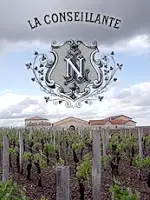 favourite wines of the vintage (I think it could be superb) and Neal Martin posting his notes and praising a selection of vintages from 1981 – 2005 on Robert Parker’s site, I thought it was about time to look at this chateau again.
favourite wines of the vintage (I think it could be superb) and Neal Martin posting his notes and praising a selection of vintages from 1981 – 2005 on Robert Parker’s site, I thought it was about time to look at this chateau again.
(I wrote about La Conseillante and its namesake in Chateau La Conseillante, the Iron Lady and Louis Nicholas if you would like to learn more about the chateau’s roots.)
La Conseillante lies on the plateau in eastern Pomerol on the boundary with the St Emilion appellation in fact Pomerol was once a sub-appellation of Saint Emilion, and was only granted independent status in 1900.
The name is derived from the Latin word “poma” used by both Virgil and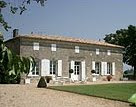 by Horace, to describe fruits with pips. Pomerol’s viticulture dates back a long way: the plateau there was crossed by two Roman roads, one of which was used by the poet Ausonius to go to his villa, Lucaniac.
by Horace, to describe fruits with pips. Pomerol’s viticulture dates back a long way: the plateau there was crossed by two Roman roads, one of which was used by the poet Ausonius to go to his villa, Lucaniac.
The wine making tradition began by the Romans was continued by the Knights Hospitaller who took possession of Pomerol in the 12th Century and the Pomerol Commandery is the oldest Commandery in Aquitaine.
Despite its history and the fin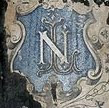 e wines Pomerol produces it is something of an anomaly when compared to the other famous communes of Bordeaux, as there are no grand estates and it has never had its châteaux officially ranked in the 1855
e wines Pomerol produces it is something of an anomaly when compared to the other famous communes of Bordeaux, as there are no grand estates and it has never had its châteaux officially ranked in the 1855
Classification it is home to some of the most famous of wines – Château Pétrus and Le Pin which are unofficially grouped with the Premier Gra nde Crus (First Growths) of Bordeaux.
nde Crus (First Growths) of Bordeaux.
The vineyards of La Conseillante, the Rothschild’s L’Evangile, Pétrus and the Saint Emilion First growth Cheval Blanc nearly overlap each other and should you wander between the vineyards you will find no fence or sign barring the way.
The soils in this area are gravels and clays but La Conseillante has a quantity of Crasse de Fer (a firm and stony blend of earth and metal with  high content of iron-oxide – a phenomenon shared with Petrus and with La Fleur Morange over in Saint Emilion).
high content of iron-oxide – a phenomenon shared with Petrus and with La Fleur Morange over in Saint Emilion).
According to the tradition, the strong violet aroma in La Conseillante wines is supposed to be directly linked to the high concentration of Crasse de Fer clay in the soil.
When the Nicolas family acquired La Conseillante in 1871 they not only gave the la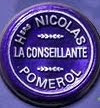 bel the characteristic shield with a silver border enclosing the letter “N” but the purple cap to symbolize the character of the wine – which have aromas of violets with hints of coffee and vanilla – “violet” means “purple” in French.
bel the characteristic shield with a silver border enclosing the letter “N” but the purple cap to symbolize the character of the wine – which have aromas of violets with hints of coffee and vanilla – “violet” means “purple” in French.
Perhaps they also gave a nod to the Imperial Purple of Rome in acknowledgement to Pomerol’s Roman roots.
The Nicolas family can trace their roots back to 1698, at which time they were already living in the region of Libourne, at Saint-Denis de Pile and Saint-Quentin de Baron.
Today, the estate is managed by the fifth generation, assuring continuity and the attachment of a family to a great wine.
The family brought in Jean-Michel Laporte in 2004 who is now Director and 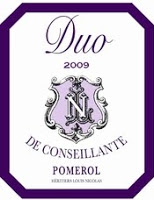 Gilles Pauquet as consulting oenologist (who is also the oenologist for Château Cheval Blanc amongst several other top flight chateau). La Conseillante created its first Second Wine in 2007, named Duo, vinified for an earlier-drinking style and made from younger vines.
Gilles Pauquet as consulting oenologist (who is also the oenologist for Château Cheval Blanc amongst several other top flight chateau). La Conseillante created its first Second Wine in 2007, named Duo, vinified for an earlier-drinking style and made from younger vines.
According to the chateau: “the Duo label builds on the reputation of the first wine with the aim of lastingly establishing it as one of the top Bordeaux names. It gives our wines a higher profile and sends a clear message to connoisseurs and our partners about how forward-looking our estate is.”
Robert Parker awarded the 2009 La Conseillante 95 – 98 points and noting:
“Now that La Conseillante is making a second wine with more severe selection, think of the 2009 as a version of the 2000 on steroids.
This is never going to  be a blockbuster wine, because the terroir just seems to produce silky, elegant wines, but in this case, the 2009 has an extra kick and level of concentration that is unprecedented.
be a blockbuster wine, because the terroir just seems to produce silky, elegant wines, but in this case, the 2009 has an extra kick and level of concentration that is unprecedented.
Inky bluish purple, with an extraordinary nose of framboise, black raspberries, spring flowers, spice box, and a hint of truffle, the wine has great depth, full-bodied opulence, silky tannins, enormous power and richness, but again, a vibrancy and uplift that are just freakish in this vintage.
That’s one of the great hallmarks of 2009 and one that will always stand out over the next 30 years. This wine should be drinkable in 5-7 years and last 40 or more.”
I am looking forward to tasting the 2010 at En Primeur next year!

